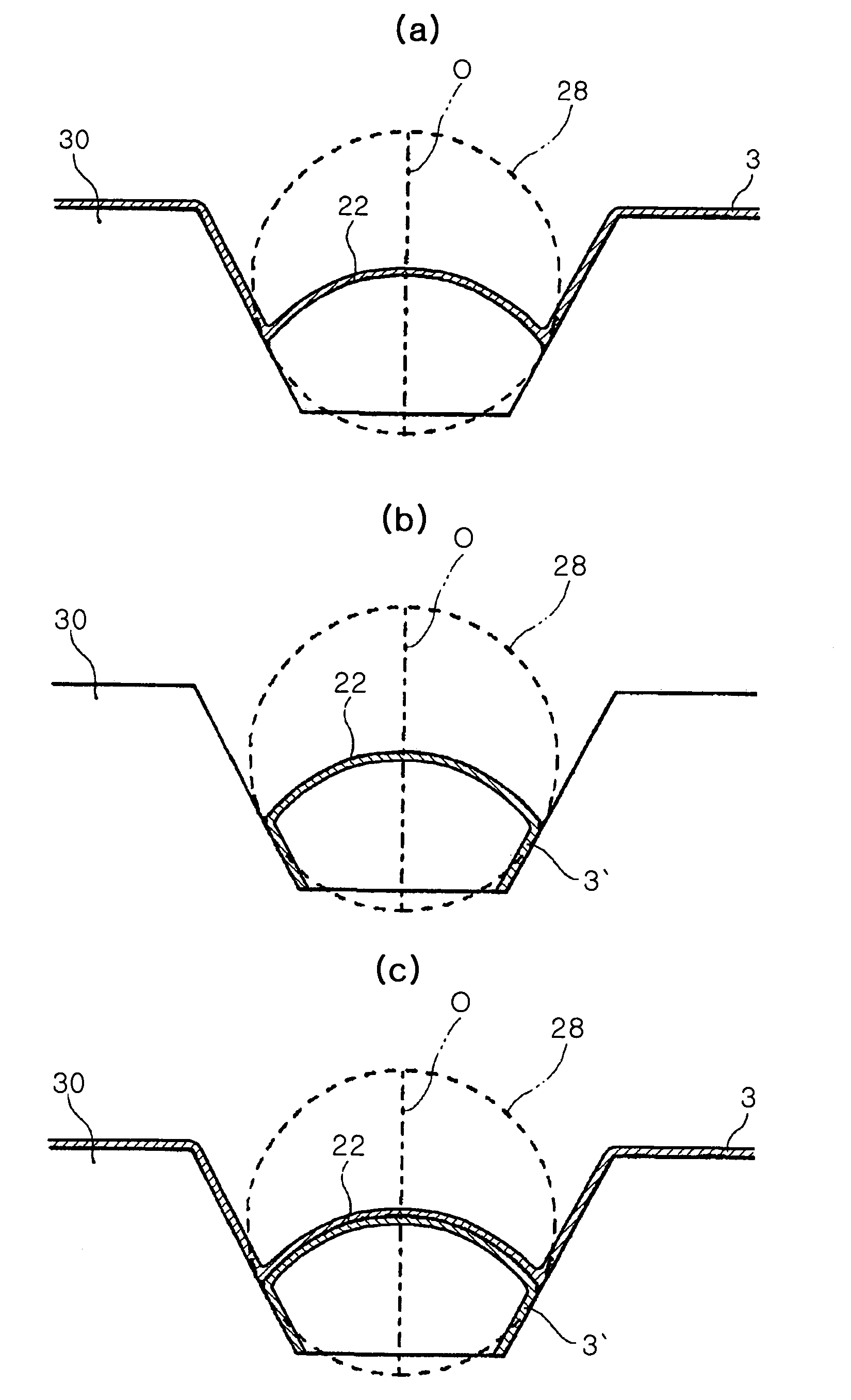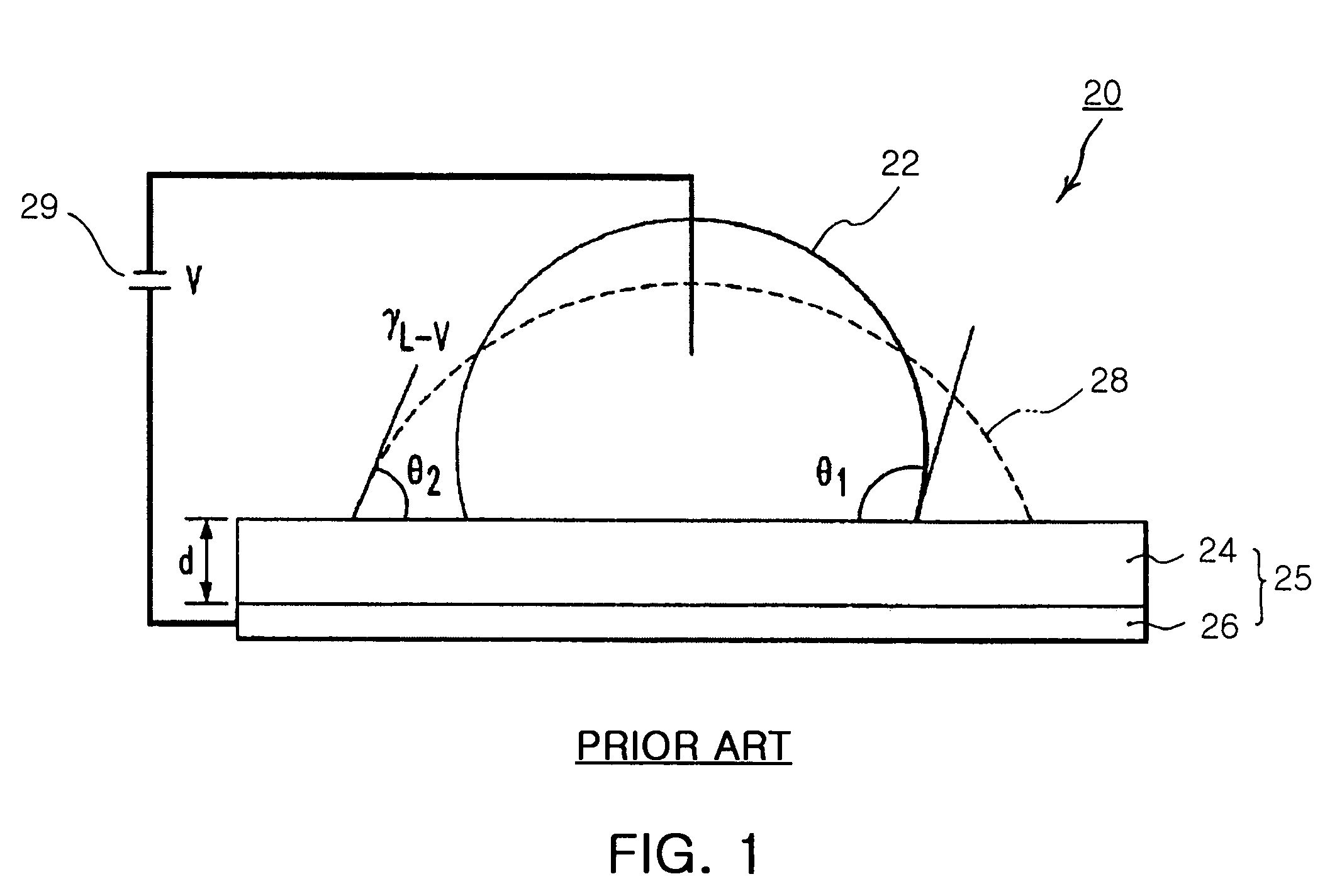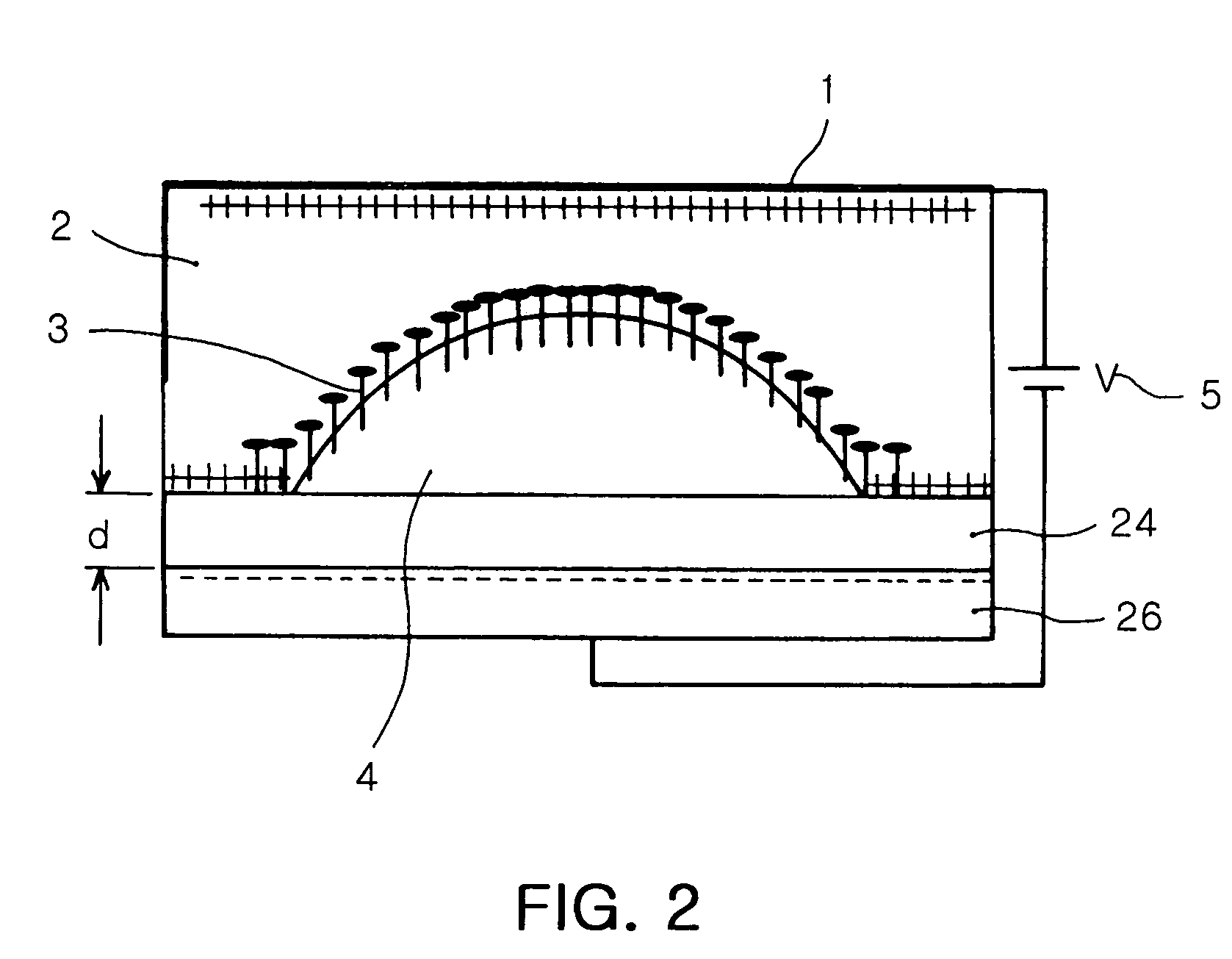Variable focus liquid lens with reduced driving voltage
a liquid lens and driving voltage technology, applied in the direction of instruments, non-metal conductors, conductors, etc., can solve the problems of insufficient stability of liquid lenses using electrowetting, mixing of two fluids or turbidity, and unresearched electrowetting. the effect of reliability between the two fluids
- Summary
- Abstract
- Description
- Claims
- Application Information
AI Technical Summary
Benefits of technology
Problems solved by technology
Method used
Image
Examples
examples
[0049]In these examples, in order to confirm the effect of the liquid lens containing surfactant, surfactant-containing electrolyte and insulation liquid were prepared to fabricate the liquid lens in FIG. 3. Then, the driving voltage and the variable dioptrie were measured to observe the reduction of the driving voltage. The compositions of the electrolyte and the insulation liquid are provided in Table 1 in order to compare the case of containing the surfactant and the case of not containing the surfactant. For the surfactant, non-ionic fluorine alkylacryl-based high polymer surfactant (3M, FC4430) and silicon-based surfactant (DHM, CAS: 145686-74-4) were used. The water used for preparation of the electrolyte was 3DW. For the fabrication of the liquid lens, silicon oil and dibromohexane silicon oil available from Dow Corning were used with the compositions shown in Table 1.
example 1-5
[0062]Except that the conductive liquid and the insulation liquid was prepared to contain non-ionic fluorine alkylacryl-based high polymer surfactant (3M, FC4430) and silicon-based surfactant (DHM, CAS:145686-74-4) as shown in Table 1 below, the liquid lens was obtained through the same procedures as in the above Comparative Example.
[0063]Using the liquid lens obtained from the above process, the driving voltage and the variable dioptrie were measured through the same procedures as in the Comparative Example.
[0064]The compositions of the electrolyte and the insulation liquid used in Comparative Example and Examples 1-5 are shown in Table 1.
[0065]
TABLE 1Compositions of the electrolyte and the insulation liquid usedin Comparative Example and Examples 1 to 5 (weight ratio)ComparativeExample 1Example 2Example 3Example 4Example 5ElectrolyteH2O1008080808080LiCl02020202020Na2SO40.200000FC4430 (3M) (non-ionic——0.0030.0030.010.01fluorinealkylacryl-basedhigh polymersurfactant)InsulationDC704 ...
PUM
 Login to View More
Login to View More Abstract
Description
Claims
Application Information
 Login to View More
Login to View More - R&D
- Intellectual Property
- Life Sciences
- Materials
- Tech Scout
- Unparalleled Data Quality
- Higher Quality Content
- 60% Fewer Hallucinations
Browse by: Latest US Patents, China's latest patents, Technical Efficacy Thesaurus, Application Domain, Technology Topic, Popular Technical Reports.
© 2025 PatSnap. All rights reserved.Legal|Privacy policy|Modern Slavery Act Transparency Statement|Sitemap|About US| Contact US: help@patsnap.com



